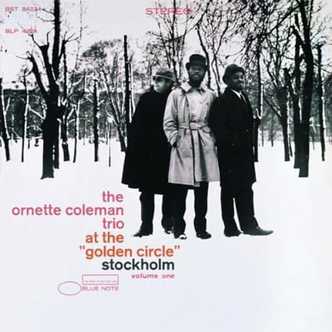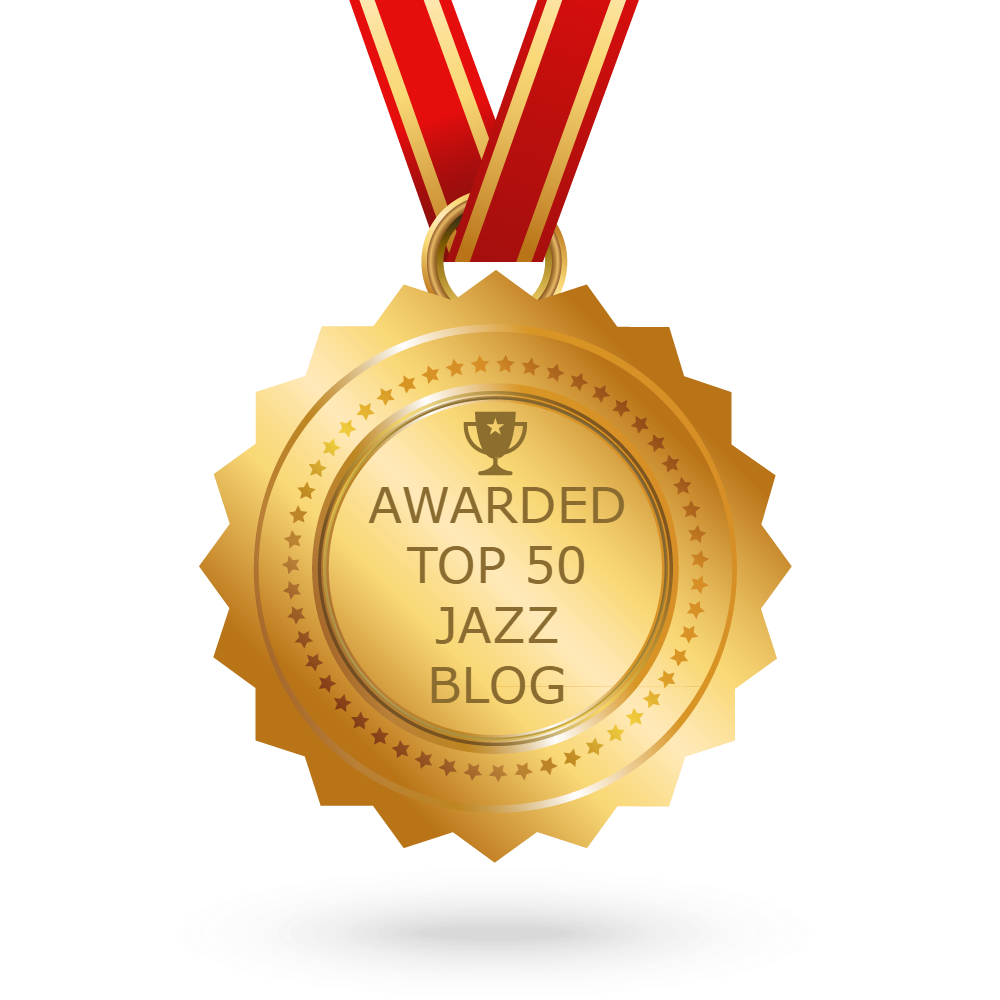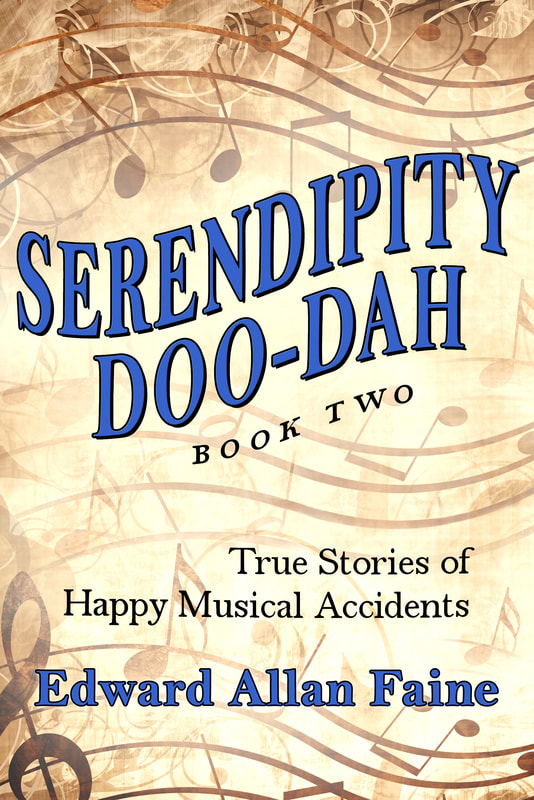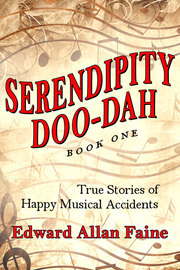| Looking back five decades, we can see that 1966 was a year of living furiously in the pages of the preeminent jazz magazine DownBeat—and by extension throughout the entire jazz arts community. Storm clouds had been gathering over the previous couple of years, but a thunderclap and a bolt of lightning struck in a DownBeat article by tenor saxophonist Archie Shepp titled “An Artist Speaks Bluntly.” (1) The musicality and validity of avant-garde jazz variously called “free jazz,” “new wave,” and the “new thing” was being questioned by certain critics and members of the fan base, who labeled it “noise” and “anti-jazz.” |
Shepp changed, some said charged, the debate by insisting the criticism was not a matter of taste or even a misplaced nostalgia for earlier styles of jazz, but a racially motivated diatribe based on an inability to comprehend the artistic expressions (and living conditions) of its African American practitioners, calling out critics and others as racists and bigots.
Yet, 1966 was also the year that the “new thing” (and its promulgators) began to take hold, receiving a modicum of recognition and respectability. The father of the new thing movement received five-star DownBeat ratings for Ornette Coleman: At the Golden Circle, volumes 1 and 2, with volume 1 awarded Record of the Year by both DownBeat critics and readers, the latter designating him Jazzman of the Year.
He ranked high in the individual categories as well: alto sax (critics second/readers third), composer (second/third), and combo (third/seventh). It was Ornette’s year all right and to a lesser extent John Coltrane’s, who by then had acquired high-priest status in the movement. He received five stars for his Ascension album, which finished third in the Record of the Year category in both the critics and readers polls.
Other new wave jazzers cracked the critics poll as well: tenor saxophonist Archie Shepp (fourth), and trombonists Grachan Moncur III (third) and Roswell Rudd (fourth). In the Talent Deserving of Wider Recognition category, fellow tenor men Charles Lloyd and Albert Ayler notched first and second. Drummers Sonny Murray and Milford Graves polled first and second, respectively, and David Isenson (bassist on Ornette’s albums), took second place.
Lagging a bit behind, DownBeat readers nonetheless acknowledged trombonists Moncur (third) and Rudd (fourth), and placed tenor player Charles Lloyd a distant sixth behind top vote getter Coltrane. Lloyd polled third on flute on the strength of his four-star Dreamweaver album. And that was that.
New wave jazz made an appearance at the two major jazz festivals in 1966 with mixed results, as discussed below.
Newport Jazz Festival
Organizer George Wein at the piano kicked off Newport ’66 with its expanded 18,000 fan seats and enormous stage on Friday night with an all-star group: Buddy Rich (dms), Bud Freeman (ts), Ruby Braff (tp), and Gerry Mulligan (bs). The latter shocked everyone when he used an alto sax on his signature “Bernie’s Tune.” The shock was mild compared to what came next. Newport chronicler Burt Goldblatt reported:
It was a shocker to begin with to find Shepp, an avant-gardist of jazz featured on opening night. With a tongue-in-cheek ambience he assaulted the fans with an irritating march, a raucous, blaring segment of Billy Strayhorn’s “Prelude to a Kiss,” and a caricature of his own cerebral style of playing, intermixing it with a poetry reading . . . Part of the audience interrupted his reading and jeered him. “I know you racists don’t like jazz. If you think I’ll go on under these conditions, I won’t.” He finished the poem and played another number to a cheering audience. (2)
Saturday afternoon mixed things up again, showcasing what Dan would call “seasoned professionals”—the Jazz Crusaders and the Horace Silver Quintet—alongside “amateurs” (purveyors of the “new thing”)—trumpeter Bill Dixon and saxist Ken McIntyre, the Charles Lloyd Quartet, and the John Coltrane Quintet.
Dan dismissed the entire afternoon as heavy going, and Whitney agreed in part: he didn’t favor the dull five-part dirge presented by Dixon or the Coltrane set that featured Pharoah Sanders “roaring elephant shrieks.” The New Yorker critic, however, appreciated the Charles Lloyd Quartet, especially pianist Keith Jarrett, whose quasi-gospel solo he declared a masterpiece.
Nina Simone, all agreed, was the standout on Saturday night, singing blues, work songs, and ballads and earning a huge ovation from the audience. The newly organized Thad Jones/Mel Lewis orchestra drew rave reviews from Newport chronicler Goldblatt: “In a big band milieu dominated by the sounds and arrangements of Basie, Ellington and Herman, the new band was a breath of fresh, gusty air.” Dan wholly concurred, while Whitney described their performance as perfunctory.
The next day brought forth Woody Herman and his young aggregation playing an up-to-date book, laced with a couple of old warhorses “Woodchoppers Ball,” and “Apple Honey.” Mid-show, a surprise: a reenactment of Woody’s Second Herd, a four-brother reunion with tenorists Al Cohn, Zoot Sims, Stan Getz, and Gerry Mulligan taking the late Serge Chaloff’s place on baritone sax. And, yes, Stan Getz stepped forward to play his defining hit “Early Autumn.”
Two surprises followed: (1) a raucous Buddy Rich/Herman duo with plenty of horseplay and wild drums and (2) the band backing vocalist Tony Bennett auditioning for an invitation to Newport ’67. He didn’t pass.
Sunday evening opened with Teddy Wilson at the piano, bassist Gene Taylor, and ubiquitous drummer Buddy Rich. Wilson sounded as fresh and direct as always and Rich—the hero of this year’s festival according to Goldblatt—fashioned another drum kit exhibition, which had the crowd roaring and Dan and Whitney lavishing.
Next up, Duke Ellington and his famous orchestra. To no one’s surprise, Duke paid homage to selections from his own songbook—the dreaded medley as some would have it—including some new additions: “West Indian Pancake,” neatly essayed by the serpentine tenor of Paul Gonsalves, and “La Plus Belle Africaine,” a former piano piece outfitted for the full orchestra with trumpeter Cat Anderson piercing the night air with frightful screams.
Dan, a bit more ecstatic than Whitney, thought the band had its best Newport night since the famed breakout at Newport ’56. Both applauded the first lady of jazz, Ella Fitzgerald, when she hooked up with Duke’s band supplemented with her own working piano trio. She sang a dozen crowd-pleasing numbers, including a fast “Cottontail,” topped with some exhilarating four-bar breaks between the singer and tenor man Gonsalves.
There were so-called guitar and trumpet workshops Monday afternoon; a chance for musicians to strut their stuff, together and solo. George Benson starred in the guitar segment, while a cornucopia of trumpeters—Red Allen, Ruby Braff, Kenny Dorham, Dizzy Gillespie, Bobby Hackett, Thad Jones, Howard McGhee, Jimmy Owens, and Clark Terry, their ages ranging from 20 to 70—entertained all who came. When Bobby Hackett and Dizzy Gillespie joined horns, impresario Wein announced, “A historic moment in jazz.”
Well, okay, but some of the other pairings were historic as well. Whitney praised Hackett—as did Dan—for the marvelous duet with Dizzy on “’S Wonderful,” and his “Struttin’ with Some Barbecue” tribute to Louis Armstrong on his birthday.
Miles Davis and his quintet performed a brief set of four surprisingly intense numbers. Whitney noted that saxophonist Wayne Shorter must have been listening to Ornette Coleman, while drummer Tony Williams kept up a steady swamping rush of cymbals. Dan was upbeat as well, saying, “There can no question that this is one of the most unified groups of today, able to do things with time as if through telepathy. And when the time changes, the swing doesn’t.”
Flautist Herbie Mann and his group brought the crowd to a high pitch of excitement, but the schedule was full and Mann departed. Chronicler Goldblatt declared Mann “one of the festival’s favorites this year.” Dan seconded Goldblatt on Mann’s popularity. “He knows how to get to the people.”
Dizzy Gillespie along with his quintet took the stage and, according to Dan,
did a set that was perhaps the most perfectly paced and presented of any working group at the festival . . . Gillespie was astonishing throughout, launching solos like roman candles but the moment of truth came in a subdued “Tin Tin Deo,” recapturing the mood of the afternoon duet [with Hackett]. The end of the evening was all Count Basie and his band, part nostalgia, part current. The band backed singer Jimmy Rushing, who was in rough voice, but still packed a punch.
served as a perfect demonstration of certain basic facts concerning the state of jazz today, and it often became an object lesson in the difference between amateurs [“new thing” musicians] and seasoned professionals [everybody else]. One came away from the artistically uneven but always instructive musical marathon with renewed faith in the permanence and viability of established jazz values and confirmation of certain lingering doubts about the much touted innovators that run counter to those basic truths.
So there, Dan, how’s that for lingering doubts about the much touted innovators? In any case, kudos to George Wein for booking the “new thing.” In jazz, the meritorious aspects of any new thing are always assimilated.
Monterey Jazz Festival
The attending critics of record were “down” on Monterey ’66, Whitney Balliett (5) more so than DownBeat columnist Pete Welding. (6) Whitney tore into the opening-night concert and its desultory performances by the Gil Evans Band: “solos were weak, the brass and reed sections faltered, and the rhythm section communed with itself,” and the Dave Brubeck Quartet “visibly coming apart, the leader hasn’t seen fit to experiment with adding new instruments and new blood.”
Singer and alto saxophonist Vi Redd freshened things up a bit, he allowed, but the Count Basie Band, then marching through a dozen numbers, “should have perhaps stripped down to a smaller band as it did in the 1950s” (Ouch!).
The next day’s afternoon concert featured singer Jon Hendricks (reciting poetry), blues singers Muddy Waters, Memphis Slim and Big Mama Thorton—whom Whitney praised—followed by the Paul Butterfield Blues Band and Jefferson Airplane (rock and rollers both, no doubt booked to show off their blues chops).
Whitney had nothing but good things to say about guitarist Bola Sete and his drummer, but then eviscerated everything else on the evening concert: saxophonist Booker Ervin was wooden; Gil Evans on hand once more sounded brighter but in a “mother-of-pearl sort of way”; followed by “rundowns” by singer Carol Sloan, Cannonball Adderley’s group, and tenor sax player Joe Henderson. By midnight, the out-of-place New Yorker wondered if Newportitus had begun to afflict Monterey, a festival heretofore celebrated for its tidiness and economy.
Whitney remained mostly in a foul mood on the final day. He bemoaned the Don Ellis Big Band’s overemphasis on odd time signatures that sacrificed melodic content for rhythmic complexity, but admitted they played with fire and precision, although the trumpet leader sounded like an avant-garde Al Hirt.
Pianist Randy Weston—a blurred Thelonious Monk, Whitney said of him—played for an hour and twenty-five minutes and pianist Danny Zeitlin was fast and empty. The New Yorker critic couldn’t contain his admiration for Carmen McRae, saying she was probably the most skilled—albeit mannered and brittle—popular singer alive.
The festival closer, Ellington Orchestra, received its share of lukewarm praise from Whitney, who claimed it was in satisfactory form, while noting the acrobatic dancing of Bunny Briggs during a number from Duke’s Sacred Concert.
DownBeat critic Pete Welding voiced a sour note on Friday’s opening night as well. Marred by a faulty amplification system, the Gil Evans band sounded a mite shaky. Sitting in as a guest, baritone master Gerry Mulligan proved to be the only bright spot, delighting the crowd as he did at Newport with his solo on alto saxophone.
The rest of the evening, as Whitney had also concluded, was relatively routine. The Brubeck Quartet was rather moribund, as was Count Basie’s band. Friday’s surprise, the critics agreed, was vocalist/saxophonist Vi Redd, more for her Sonny Stitt–like alto work than her singing.
Both critics were down on Saturday’s “Blues All the Way” presentation, Pete reporting that it was only intermittently effective, the only memorable moment provided by Big Mama Thorton.
As for Saturday night, both critics praised Bola Sete—one of the festivals highest artistic achievements, wrote Pete. On the rest of the evening, he differed from Whiney in spots, singling out Gil Evans band’s second set, and the stints of tenor player Booker Ervin, the Cannonball Adderley Quintet “the latter its lusty, glistening self,” and singer Carol Sloan.
Pete parted ways with Whitney on the Sunday afternoon session. Though the newer music, he wrote, was not of the most avant-garde stripe [à la Newport], it was . . . a signal success, the result of thoughtful, though cautious, planning and vigorous, enterprising playing by the groups, each of which was obviously “up” for the concert.
Don Ellis’ 21-piece orchestra got things off to a powerful, explosive start. The group had a covey of fine, idiomatic soloists; witty, provocative arrangements; and a surging rhythm section of three basses and three drummers that allowed it to swing madly even in the unusual time signatures.
The well-programmed set included “New Nine,” a composition based jointly on an Indian raga and the blues, which featured a long, explosive Ellis solo modeled on the raga scale that used the semitones made possible on the leader’s specially constructed four-tone trumpet, it thundered to a crashing conclusion.
DownBeat reporter Pete waxed poetically over the impressionistic music of the Charles Lloyd Quartet: pianist Keith Jarrett’s stroking strings and blocks of chords and the leader’s dulcet flute on “Autumn Leaves.” A bossa nova followed with Lloyd on tenor, playing with “shuddering, quicksilver grace,” before a concluding “East of the Sun” with Lloyd in a Coltraneish vein.
Next up, the John Handy Quintet, Monterey’s breakout star performers of the previous year—same intriguing lineup, altoist Handy with violin, guitar, bass and drums. Pete again: “The group’s distinctive music seems to have more perfectly assimilated the tonal and rhythmic freedom of Eastern and related music into the fabric and methodology of jazz discipline than any other blending so far.”
The afternoon concert ended rather inconclusively. The Evans festival orchestra performed two brief selections before the curtains were summarily drawn, leaving Evans, Pete and the audience baffled. All eventually departed feeling slightly cheated.
Pete even declared the Sunday night concert the most successful of the three evening events; all four of the acts were in consistently good form. Randy Weston’s fine group, for example, hewed to a middle ground between small group freedom and orchestral mass and discipline, pleased many with its fire and sensitivity, its excellent book of originals, and its well-paced program.
Festival favorite Danny Zeitlin followed with a trio set that could not be faulted, the pianist effortlessly working his way through a demanding program of driving funkiness, charming lyricism, and uncompromising experimentation. The evening belonged to Carmen McRae—here, the two critics agreed 100 percent. Her all-too-short set was a study in the vocalists art at its highest. “Miss McRae is perhaps the most nakedly adventurous singer around these days, essaying things her sister-vocalists would never dare attempt.”
Not skipping a beat, Pete lauded the imperturbable Duke Ellington, who concluded the evening with an invigorating set of staples and selections not ordinarily played. Even though soloist Paul Gonsalves had a rough evening on his solos, the critic concluded that Ellington never disappoints, even on a bad night.
Overall, although Pete found more to like than Whitney, he left the festival grounds late Sunday night feeling, as he put it, “gulled, lured by a promise that failed to materialize.” Such feelings arise when expectations are set too high.
- Archie Shepp, “An Artist Speaks Bluntly,” DownBeat, December 19, 1995, 16.
- Burt Goldblatt, Newport Jazz Festival: The Illustrated History (New York: Dial Press, 1977), 130–39.
- Dan Morgenstern, "Newport Report," DownBeat, August 12, 1996, 14–40.
- Whitney Balliett, Collected Works: A Journal of Jazz 1954–2001 (New York: St. Martin’s Griffin, 2002), 272–74.
- Ibid., 275–79.
- Pete Welding, “Monterey Safeway,” DownBeat, November 3, 1996, 14–17.




 RSS Feed
RSS Feed